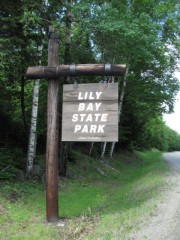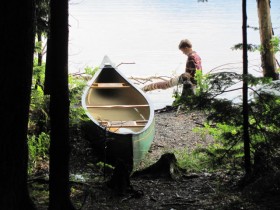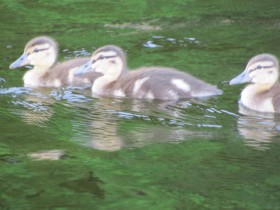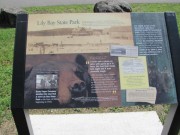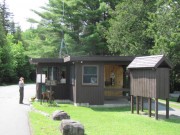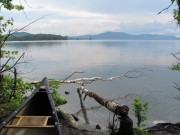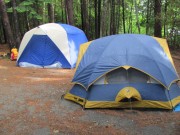is located on Moosehead Lake in the town of Beaver Cove, just north of Greenville. It occupies 925 acres of a broad peninsular bounded by the lake and Rowell Cove.
The park features two camping areas bordering the lake with 90 campsites, a sandy swimming beach, playground, two trailerable boat ramps, and a 2-mile, shoreline walking trail. Canoeing on Moosehead is rewarded by the spectacular views and the wildlife on and around the lake. The campsite supports the congregation of groups around a common eating area and campfire, with the privacy of retreating to individual campsite for sleeping.
A 2-mile walking trail follows the shoreline from the beach to Rowell Cove campground, on easy terrain with nice views of Moosehead Lake. The Park offers groomed cross-country ski trails during winter months. Nearby hiking trails include those at Mount Kineo, Big Moose Mountain, Big Spencer Mountain, and Number 4 Mountain.
Prong Pond, less than two miles away, is accessible to small boat users; Lazy Tom Bog is a spot for moose watching about 1.5 miles from the campground.
The name “Lily Bay” was mentioned as early as 1848 by Henry David Thoreau in “Ktaadn and the Maine Woods.”
An entry in a 1905 report by the U.S. Geological Survey reads, “Lily, bay and township in Piscataquis County, Maine, so named on account of the luxuriant growth of lilies.”
Additional resources
Gannett, Henry. The Origin of Certain Place Names in the United States. Washington, DC. United States. Department of the Interior. United States Geographic Survey. 1905.
Maine. Department of Agriculture, Conservation and Forestry. “Find Parks & Lands.” http://www.maine.gov/cgi-bin/online/doc/parksearch/index.pl (accessed November 4, 2014)
Thoreau, Henry David. The Maine Woods. New York: Penguin Books. 1988.
University of Maine at Orono. College of Life Sciences and Agriculture Experiment Station. Campers at Lily Bay State Park: Socio-economic Characteristics and Economic Impact. Researchers: Stanley F. Buxton and Johannes Delphendahl ; University of Maine, College of Life Sciences and Agriculture Experiment Station. Orono, Me. The University. 1970.


